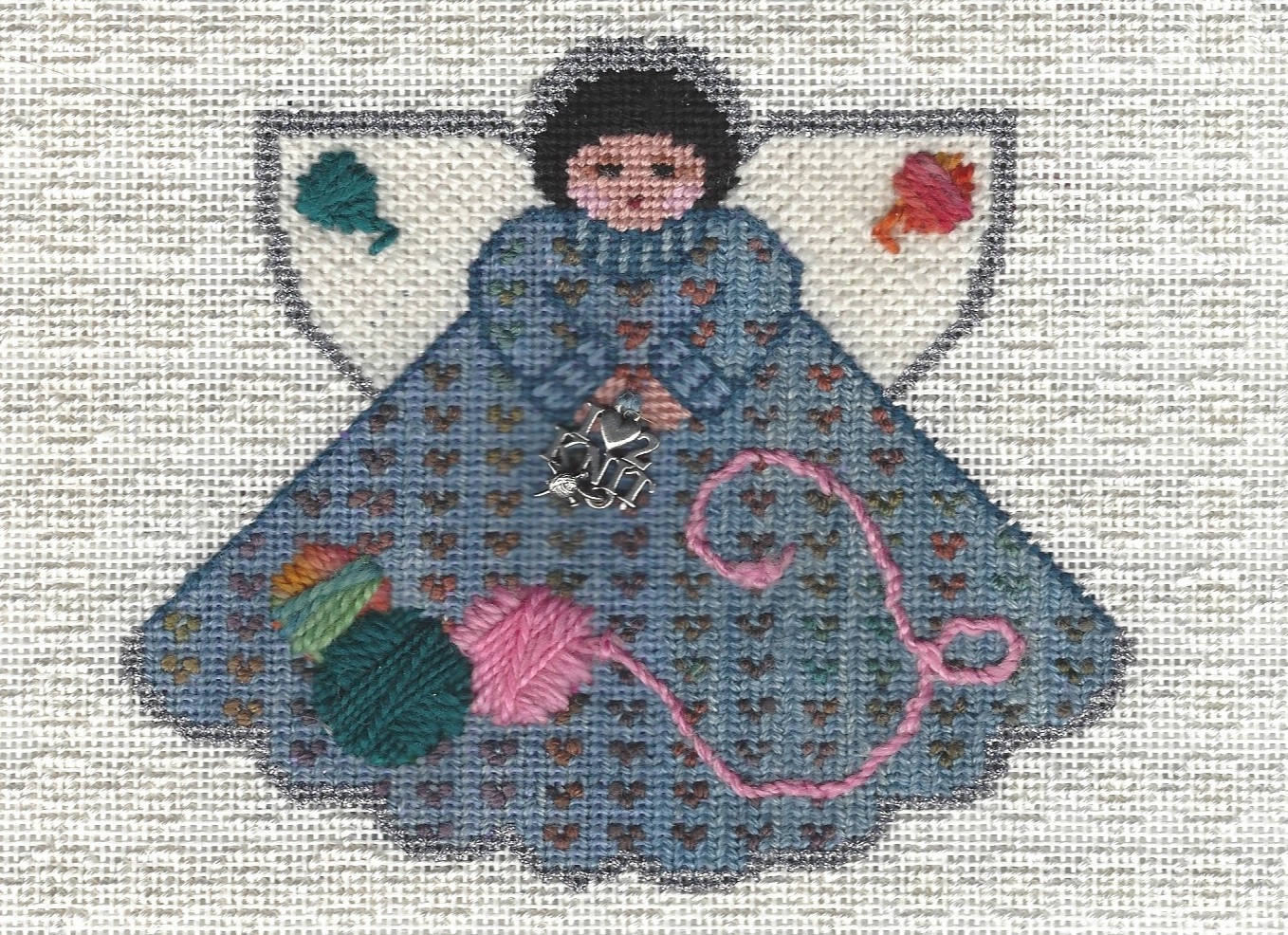
In many ways we needlepointers are lucky. If we shop in needlepoint stores, including most of those that are on-line, the materials they stock are of outstanding quality.
Even so, it’s worthwhile to understand what makes good quality in our materials, and in basic stitches.
Canvas
We know the look of great mono canvas even if there is no selvage showing. Great canvas has clean holes (no fuzz) and the threads are smooth, thick, and tightly twisted. It is also stiff with sizing not limp.
Limp canvas is usually old or dyed if it is otherwise high-quality. If it is not and still is limp, the canvas is of poorer quality.
If you take a thread of canvas and untwist it, four or five strands make up the thread.
You know that we should stitch with the grain of the canvas. Designers know this and paint canvases this way. But what if you are using blank canvas? If there is a selvage it should be on the left or right. If there is not a selvage, unravel a bit of thread in each direction. The flatter thread should be horizontal.
Although the difference is slight, canvas does have a front and back. When seen from the front, the holes will be slightly larger.
Thread
If you can feel the grain of the thread, your needle should be threaded so the fibres that stick out point back. Some manufacturers tell you how the thread is packaged so doing this is easy. For example, they might suggest you thread “the oldest cut end.”
With floss, when you are stripping the thread if the thread gathers up at the end as you pull, you are pulling against the grain. Thread your needle with the opposite end.
The grain of thread is the reason why we don’t double our thread when doing needlepoint. Doubling thread has half the strands running against the grain. Also when you do this your coverage will not be as good as when using two separate strands.
Tent Stitch
While both Basketweave and Continental work for needlepoint, do not mix them in an area. Very often you’ll be able to see the change on the front. When you change direction like this, your stitches will have a slightly different slant. It may not be very obvious, although it can be, but subconsciously you will notice it.
About Janet M Perry
Janet Perry is the Internet's leading authority on needlepoint. She designs, teaches and writes, getting raves from her fans for her innovative techniques, extensive knowledge and generous teaching style. A leading writer of stitch guides, she blogs here and lives on an island in the northeast corner of the SF Bay with her family

Leave a Reply